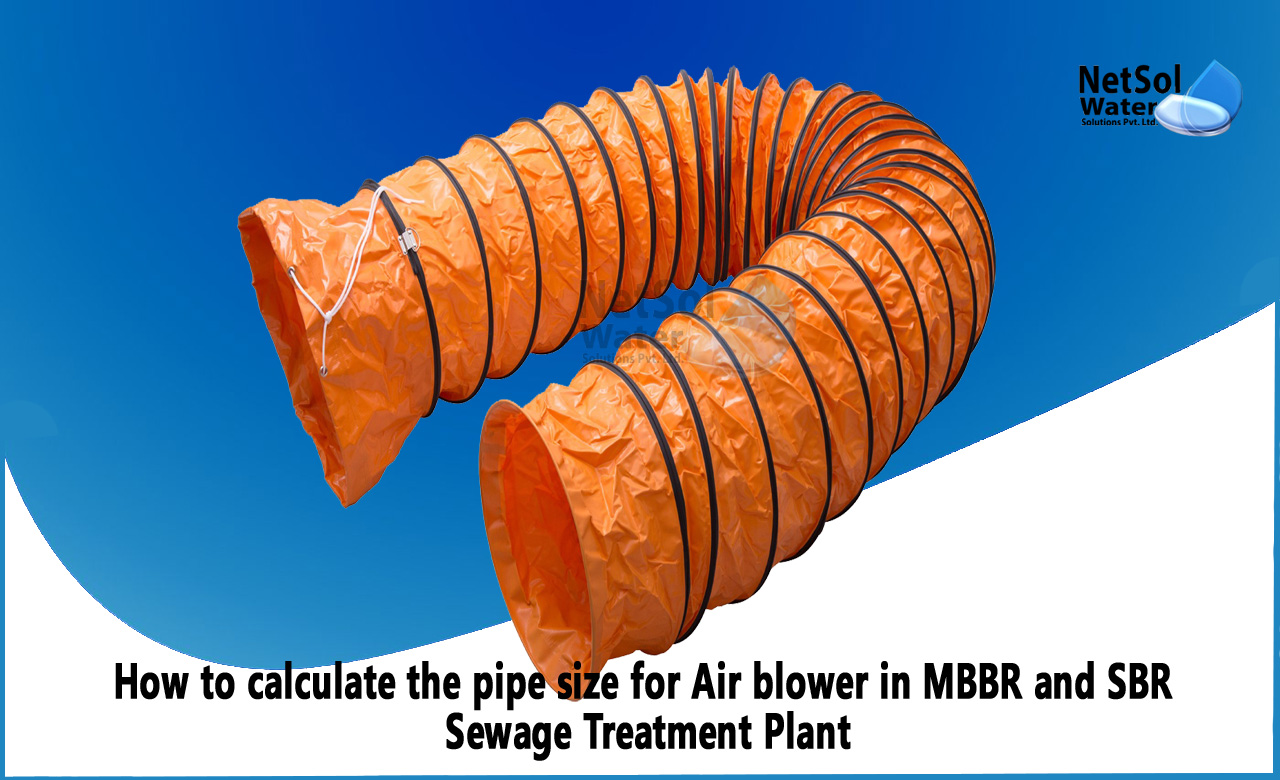How to calculate pipe size for Air blower in MBBR and SBR STP Plant?
Sewage treatment plants use various techniques to treat wastewater before it is released into the environment. One of the most common techniques is the use of air blowers for aeration in MBBR (Moving Bed Biofilm Reactor) and SBR (Sequential Batch Reactor) based plants.
In this article, we will discuss how to calculate the pipe size for air blowers in MBBR and SBR based sewage treatment plants and which pipes are better to use with air blowers for aeration.
The first step in calculating the pipe size for air blowers is to determine the air flow rate required for aeration. The air flow rate is usually expressed in terms of cubic feet per minute (CFM) or cubic meters per hour (m3/h). The air flow rate required for aeration depends on the size of the plant and the specific requirements of the treatment process. For example, a small plant may require an air flow rate of 50 CFM, while a larger plant may require an air flow rate of 5000 CFM or more.
Once the air flow rate has been determined, the next step is to calculate the pressure drop in the air distribution system. The pressure drop is the difference in pressure between the air entering the distribution system and the air exiting the system. The pressure drop is a function of the air flow rate, the pipe diameter, and the length of the pipe.
The formula for calculating the pressure drop in a pipe is:
ΔP = f × (L/D) × (ρ/2) × (V2/2)
where: ΔP = pressure drop (inches of water) f = friction factor L = length of pipe (feet) D = diameter of pipe (inches) ρ = density of air (lb/ft3) V = velocity of air (ft/sec)
The friction factor depends on the Reynolds number, which is a function of the air flow rate and the pipe diameter. The Reynolds number can be calculated using the following formula:
Re = (ρ × V × D) / μ
where: Re = Reynolds number μ = viscosity of air (lb/ft-sec)
Once the Reynolds number has been calculated, the friction factor can be determined using the Moody chart or other methods.
After determining the pressure drop, the next step is to select the pipe size. The pipe size should be selected based on the required air flow rate and the pressure drop. The pipe diameter should be such that the pressure drop is within acceptable limits and the velocity of air in the pipe is between 400 and 600 feet per minute.
In terms of pipe materials, PVC and HDPE pipes are commonly used in sewage treatment plants for aeration. PVC pipes are lightweight, easy to install, and have a smooth inner surface, which reduces friction and pressure drop. HDPE pipes are more durable and resistant to chemical corrosion, making them suitable for harsh environments.
In conclusion, calculating the pipe size for air blowers in MBBR and SBR based sewage treatment plants is a complex process that requires careful consideration of a number of factors, including air flow rate, pressure drop, pipe diameter, and pipe materials. By following the above stated guidelines, engineers can ensure that the air distribution system in their sewage treatment plant is designed for optimal performance and efficiency.
Netsol Water is Greater Noida-based leading water & wastewater treatment plant manufacturer. We are industry's most demanding company based on client review and work quality. We are known as best sewage treatment plant manufacturer, Water Softener Plant Manufacturers and effluent treatment plant manufacturers. Apart from this 24x7 customer support is our USP. Call on +91-9650608473, or write us at enquiry@netsolwater.com for any support, inquiry or product-purchase related query.



